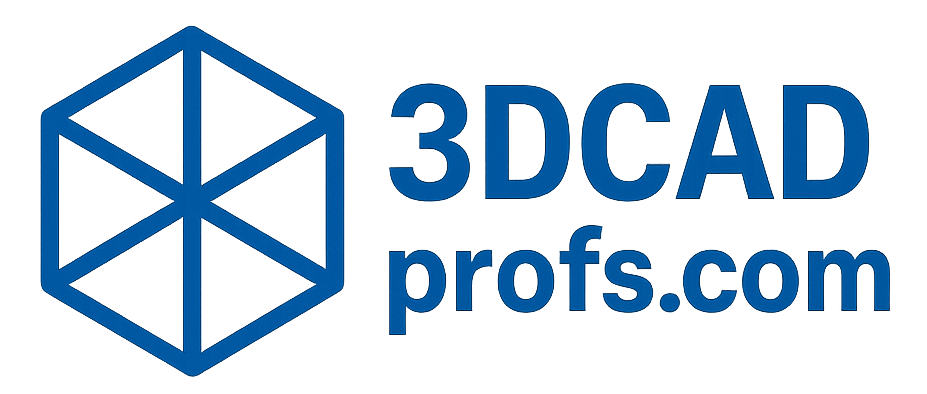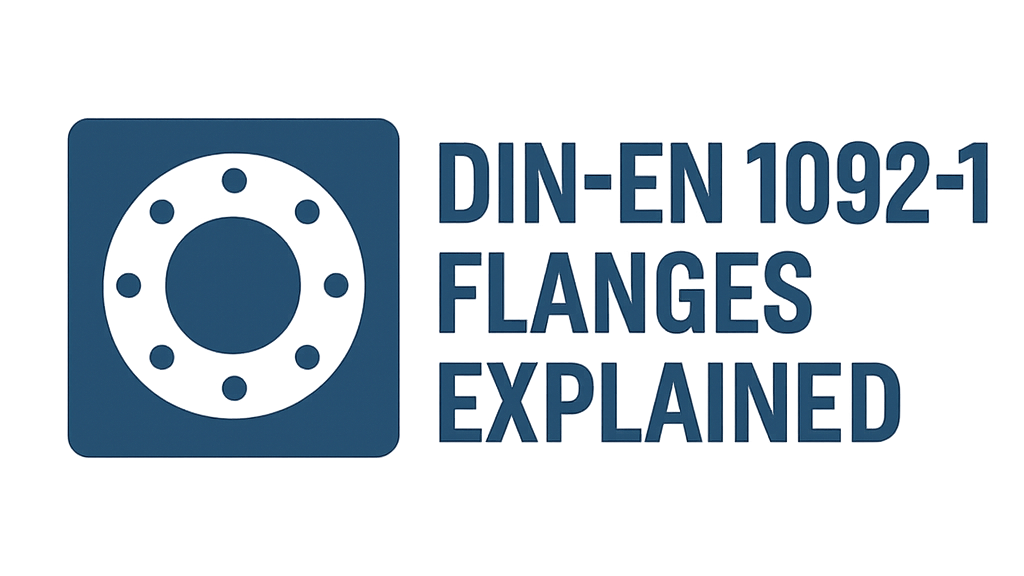DIN EN 1092-1: Steel Flanges
A Guide to European Standard Flanges for Piping Systems
Understanding DIN EN 1092-1
DIN EN 1092-1 is a key European standard that specifies requirements for circular steel flanges in PN designations from PN 2.5 to PN 400 and nominal sizes from DN 10 to DN 4000. It covers flange types, facings, dimensions, tolerances, materials, marking, and testing. This standard ensures the interoperability and safety of flanged connections in various industrial piping applications, playing a crucial role in industries like chemical processing, power generation, oil and gas, and water treatment.
The “Part 1” of EN 1092 specifically deals with steel flanges. Other parts of the standard cover cast iron (Part 2), copper alloy (Part 3), and aluminium alloy (Part 4) flanges.
Key Flange Types in EN 1092-1
The standard defines several flange types, each suited for different applications and connection methods.
Type 01: Plate (Slip-on) Flange
For welding to pipe or fittings. Economical for low-pressure, low-criticality applications.
Type 02: Loose Plate Flange
Used with a lapped pipe end (Type 32/33/34 stub end) or a collar. Allows for easier bolt alignment.
Type 05: Blind Flange
Used to blank off pipeline ends, valves, or pressure vessel openings. Withstands high pressures.
Type 11: Weld-neck Flange
Has a tapered hub for butt welding to pipe. Ideal for high-pressure, high-temperature, or critical services.
Type 12: Hubbed Slip-on Flange
Similar to Type 01 but with a hub for added strength. Welded at hub and bore.
Type 13: Threaded Flange
Internally threaded for screwing onto pipe. Used where welding is not feasible; typically for lower pressures.
Other types include Type 04 (Loose plate flange with weld-neck collar), Type 21 (Integral flange), Type 32-37 (Lapped ends/collars).
Pressure Designations (PN)
PN (Pression Nominale / Nominal Pressure) is a designation used in European standards to indicate the pressure-temperature rating of a flange. It represents the approximate maximum pressure in bars that the flange can withstand at room temperature. As temperature increases, the allowable pressure decreases. EN 1092-1 covers a wide range of PN values.
| Common PN Values | Typical Pressure Range (Approx. at 20°C) | General Application Level |
|---|---|---|
| PN 2.5, PN 6, PN 10 | 2.5 bar, 6 bar, 10 bar | Low pressure, utilities, water |
| PN 16, PN 25, PN 40 | 16 bar, 25 bar, 40 bar | Medium pressure, general industrial |
| PN 63, PN 100 | 63 bar, 100 bar | High pressure, process industry |
| PN 160, PN 250, PN 320, PN 400 | 160 bar to 400 bar | Very high pressure, specialized applications |
Actual pressure-temperature ratings for specific materials are detailed within the standard or related material standards.
Flange Facing Types
The flange facing is the surface that makes contact with the gasket. EN 1092-1 specifies several types:
Type A: Flat Face (FF)
Completely flat surface. Used with full-face gaskets, typically for low-pressure applications (e.g., cast iron, PN10/16).
Type B: Raised Face (RF)
Most common type. A small portion around the bore is raised to concentrate gasket pressure. Height varies with PN rating.
Type C/D: Tongue & Groove (T&G)
Mating flanges have a raised ring (tongue) and a corresponding recess (groove). Ensures good gasket alignment.
Type E/F: Spigot & Recess (Male & Female)
One flange has a spigot (male face), the other a recess (female face). Provides accurate alignment and gasket containment.
Type J: Ring Type Joint (RTJ)
Grooves are machined for a metallic ring gasket. Used for high-pressure and high-temperature critical services.
Materials & Marking
Common Materials
EN 1092-1 flanges are typically made from various grades of steel, selected based on application requirements (pressure, temperature, fluid compatibility):
- Carbon Steels: e.g., S235JR, P245GH, P250GH, P265GH. Widely used for general applications.
- Stainless Steels: e.g., 1.4301 (304/304L), 1.4401 (316/316L), 1.4571. For corrosive environments or high temperatures.
- Alloy Steels: e.g., P355NH/NL, 16Mo3, 13CrMo4-5. For higher strength, temperature, or specific properties.
Standard Marking Requirements
Flanges according to EN 1092-1 must be clearly marked with essential information for identification and traceability:
- Manufacturer’s name or trademark.
- EN 1092-1 standard reference.
- Flange type number (e.g., Type 11).
- Nominal size (DN).
- Pressure Nominal (PN) designation.
- Material grade and/or number.
- Heat number or cast identification.
- Flange facing type (if not standard RF for the PN).
Applications & Benefits
Typical Applications
DIN EN 1092-1 flanges are fundamental components in numerous industries:
Benefits of Standardization
Adherence to EN 1092-1 offers significant advantages:
-
🧩
Interchangeability
Ensures flanges from different manufacturers can be used together if they conform to the standard.
-
🛡️
Safety & Reliability
Standardized dimensions, materials, and testing contribute to safer and more reliable joints.
-
🌍
Simplified Design & Procurement
Engineers can confidently specify flanges, and procurement becomes more straightforward.
Ensuring Connection Integrity
DIN EN 1092-1 is more than just a document; it’s a cornerstone for safe and efficient piping systems across Europe and beyond. By standardizing critical aspects of steel flanges, it facilitates international trade, simplifies engineering practices, and ultimately contributes to the operational integrity and safety of industrial plants. Understanding and correctly applying this standard is essential for anyone involved in the design, construction, or maintenance of flanged piping systems.

